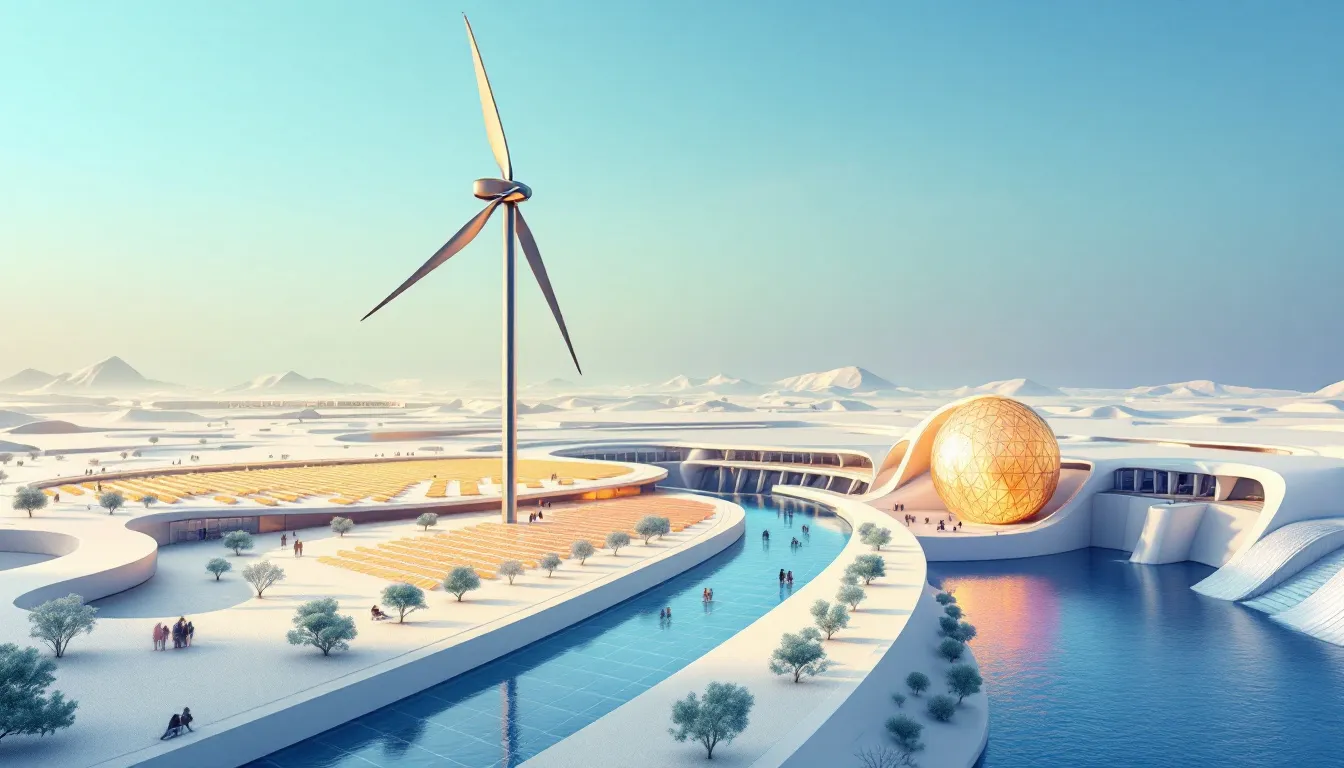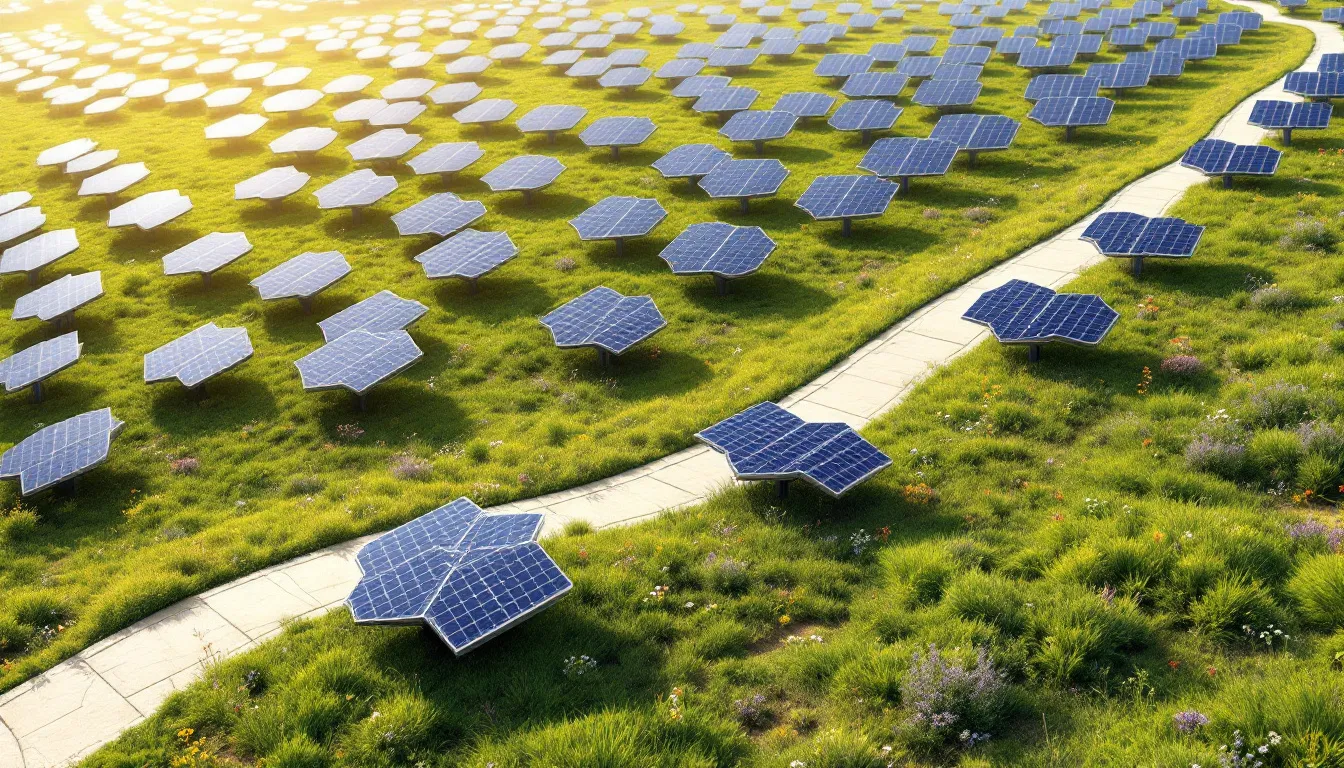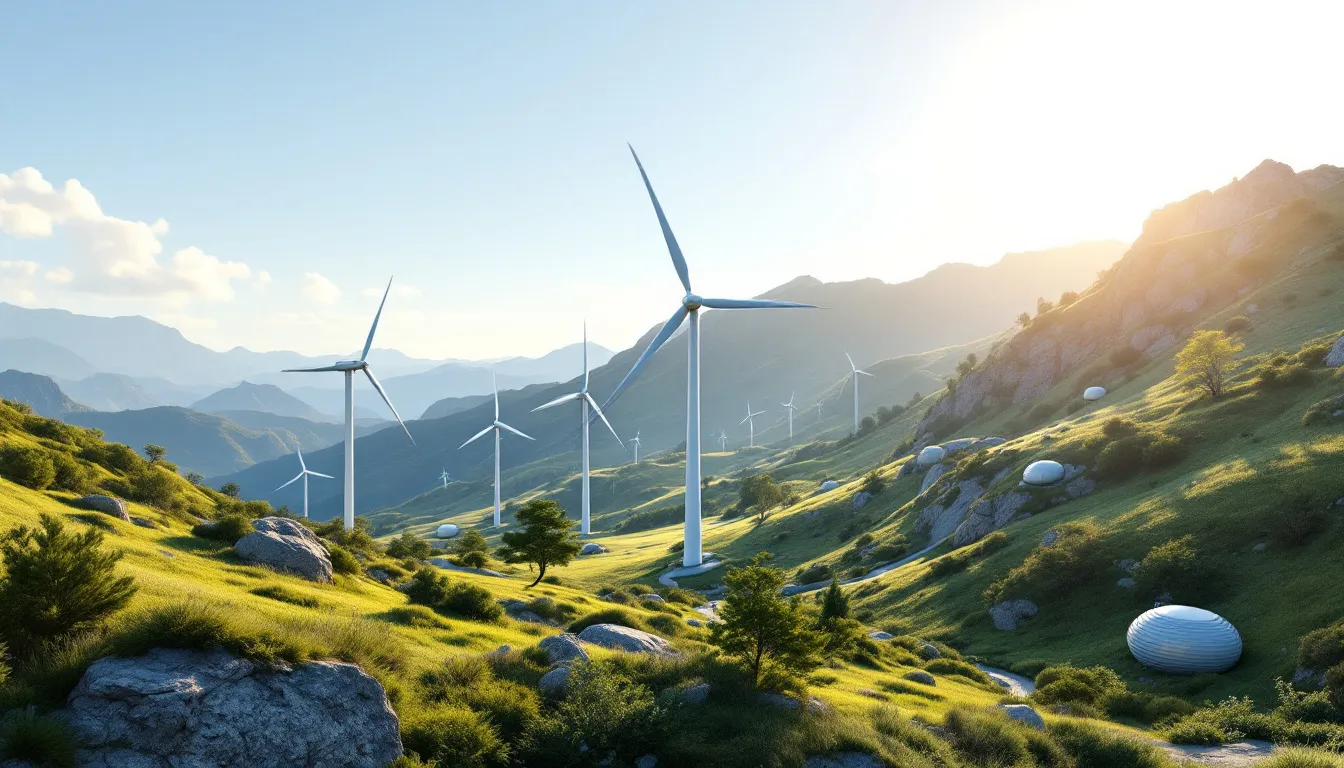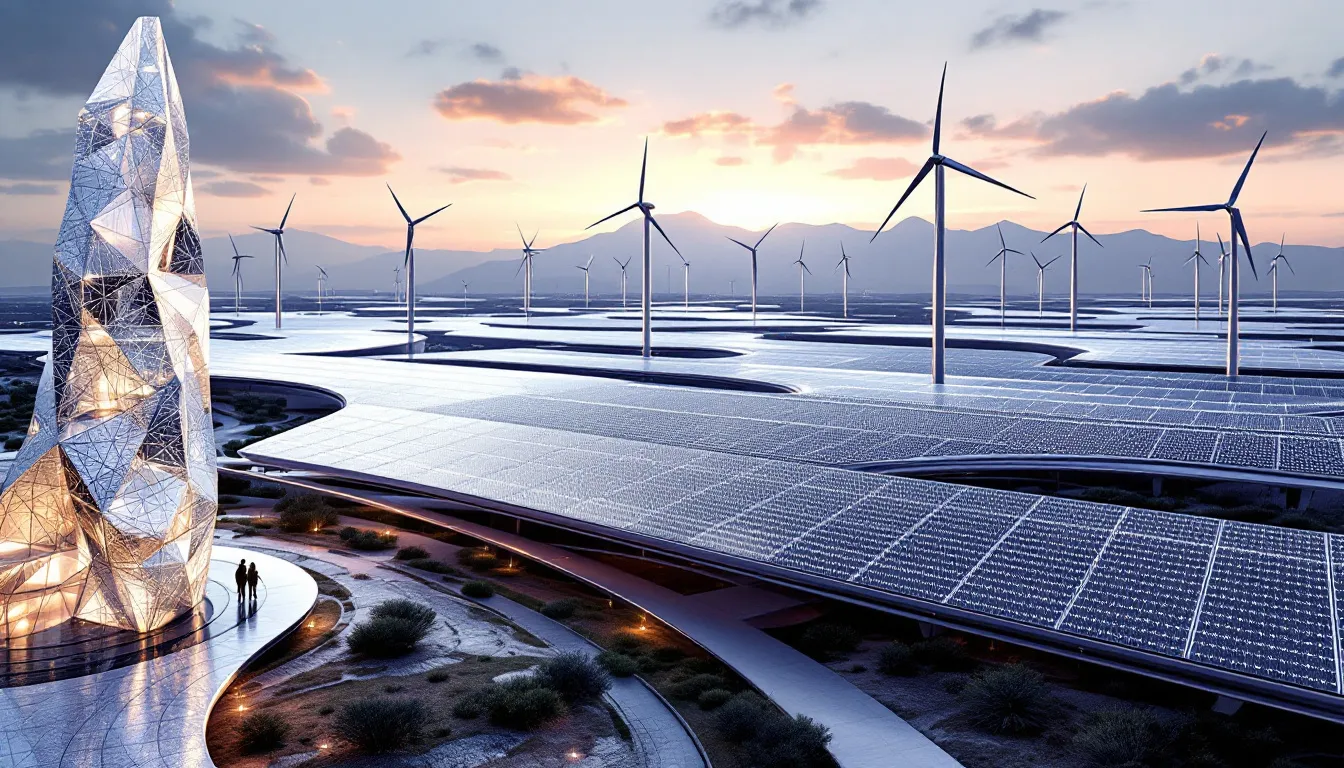Renewable energy projects use sunlight, wind, and water to generate clean electricity and cut carbon emissions. Let’s explore different types of renewable energy, its benefits, and the future building green.
Understanding Renewable Energy Projects

Renewable energy projects are at the forefront of a global effort to transition away from burning fossil fuels and mitigate the devastating effects of global warming. These renewable energy projects harness natural resources such as sunlight, wind, and water to generate electricity, significantly lowering greenhouse gas emissions compared to traditional, fossil fuel-based power generation and nuclear energy.
The importance of renewable energy is underscored by international commitments and policy goals. For instance, the 2023 UN Climate Change Conference set an ambitious target to triple renewable energy capacity by 2030, recognizing that the expansion of renewables is a major contributor to CO2 emission reductions. Similarly, the European Union aims to generate 40% of its electricity from renewable sources by 2030, reflecting strong policy support.
What’s more is that there’s a real financial incentive to transitioning to renewable energy sources. Not only do many states offer tax credits or subsidies to incentivize the adoption of renewable energy, but also as the world is forced to transition, early stage investments in renewables could yield major returns in both the short and long term.
Additionally, fossil fuel reserves are finite and as such do not represent a “forever” source of energy in the same way renewables do. Plus, the extreme weather patterns like wildfires, flooding, hurricanes, and tornadoes exacerbated by fossil fuel-powered global warming pose a threat to all sorts of civilian infrastructure and livelihoods. In this light, investing in renewables is both environmentally and financially prudent.
Among the various types of renewable energy, solar and wind power have been the most prominent. From 2011 to 2021, these two major sources accounted for the majority of the increase in renewable energy capacity. Solar energy harnesses the power of the sun using technologies like photovoltaic panels and solar thermal systems, while wind energy captures the kinetic energy of wind through turbines to generate electricity.
Related: What Does Building Green Mean in Construction, and How Can It Save You Money?
Solar Energy Projects

Solar energy projects have emerged as a cornerstone of the renewable energy movement. Harnessing the power of the sun, these projects offer a clean and abundant energy source, rapidly emerging as the world’s leading form of renewable electricity. In fact, solar electricity generation is expected to outpace hydropower by 2029, reflecting its growing dominance in electrical energy.
The rise of solar photovoltaic (PV) systems has been particularly noteworthy. In 2023, solar PV systems accounted for three-quarters of global renewable capacity additions, making a significant contribution to the overall growth in renewable electricity generation. This surge is driven by advances in solar technologies and substantial cost reductions in manufacturing solar panels over the past decade.
Related: 5 Most Expensive Planned Data Centers Under Construction [2025].
Wind Energy Projects

Wind energy projects are another vital component of the renewable energy sector, playing a significant role in reducing carbon emissions and diversifying our energy supply. As of 2023, the United States boasted a total wind capacity of approximately 148 GW from both onshore and offshore installations, highlighting the substantial growth in this sector.
Wind energy’s contribution to electricity generation has been impressive, accounting for around 10% of the total electricity produced in the U.S. in 2023. This growth is a testament to the advancements in wind energy technologies, including taller turbines and larger rotor diameters, which have increased efficiency and output. The capacity for wind energy in the U.S. has more than doubled from 2014 to 2023, reflecting a robust expansion in both capacity and generation.
Related: There’s a Childcare Desert Problem in Rural America and Developers Have the Solution.
Challenges and Solutions in Renewable Energy Projects
Renewable energy projects face several challenges that must be addressed to ensure their success and sustainability. One of the primary challenges is the environmental impact of constructing facilities such as dams for hydropower, which can alter natural river ecosystems. Mitigation efforts, including environmental studies and the implementation of aerating turbines, are essential to minimize these impacts.
Technological maturity is another significant challenge, as many renewable energy technologies are still in development. Continuous innovation and research are needed to enhance the efficiency and reliability of these technologies. The U.S. Department of Energy and other organizations are investing in research and development to advance renewable energy technology and reduce costs.
Related: What is Infrastructure, and Why Should You Know Where It’s Being Built?
Community and Economic Benefits
Renewable energy projects bring substantial community and economic benefits, particularly in rural areas. These projects create significant job opportunities, helping to retain young residents and stimulate local economies. The construction and operation of renewable energy installations provide stable employment and support local businesses.
The financial benefits extend to increased local tax revenues, which can be used to improve community services and infrastructure. In states like Iowa and Michigan, tax revenues from renewable projects play a crucial role in local budgets, reducing the tax burden on residents and enhancing public services. Landowners hosting renewable energy installations also benefit from stable, long-term lease payments, creating additional income streams.
Related: Top Construction and Real Estate Solutions to Explore at ICSC Las Vegas 2025.
Future Trends in Renewable Energy Projects

The future of renewable energy projects looks promising, with significant growth anticipated in the coming years. By 2028, it is expected that more than 42% of global electricity will be generated from renewable sources, highlighting the continued expansion of renewable energy capacity. Renewables accounted for wind and solar power generation projected to surpass nuclear power generation by 2026, further emphasizing their growing importance.
As data center projects, for example, are increasingly the basis of our digitized, artificial intelligence-powered existence, powering such facilities with renewable energy represents both a major opportunity and necessity.
Renewables-based electricity generation is also expected to overtake coal-fired generation by 2025, marking a significant milestone in the global energy transition. Offshore wind power, in particular, offers tremendous potential for future projects, with advancements in technology and increasing investment. The expansion of offshore wind is expected to play a crucial role in meeting renewable energy targets and reducing greenhouse gas emissions.
How ConstructionWire Can Help Construction Professionals Get Data on Renewable Energy Projects
ConstructionWire by Hubexo is an invaluable resource for construction professionals seeking detailed data on renewable energy projects. By using ConstructionWire, you can search for specific projects in your desired areas, gaining access to comprehensive project details and contact information for key decision-makers. This level of detail is crucial for informed decision-making and strategic planning.
In addition to providing project details, ConstructionWire offers the option to request updates directly from our research team. This ensures that you have the most current information available, enabling your team to stay ahead of industry trends and opportunities. With ConstructionWire, accessing data on renewable energy projects has never been easier or more efficient.
Summary
Renewable energy projects are not just a necessity for combating climate change; they represent a profound shift towards a sustainable and resilient future. By harnessing renewable resources such as solar, wind, water, and geothermal energy, we can significantly reduce greenhouse gas emissions and create a more diversified and secure energy supply.
As we look to the future, the expansion of renewable energy projects and the development of emerging technologies will play a pivotal role in shaping a sustainable energy system. By supporting and investing in renewable energy, we can ensure a cleaner, healthier, and more prosperous world for generations to come.
Read similar posts with insights into the construction industry on our blog page.
See how ConstructionWire project data and location analytics can work for you.

